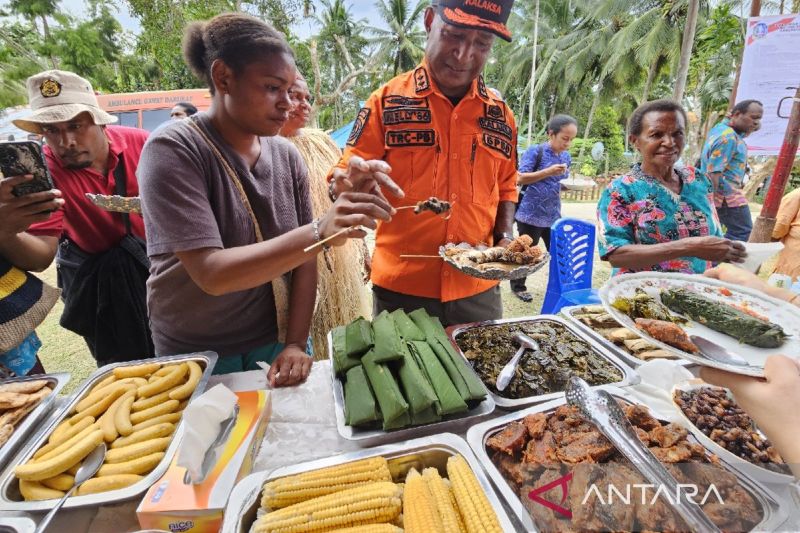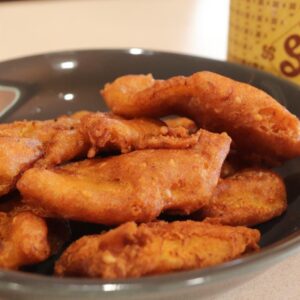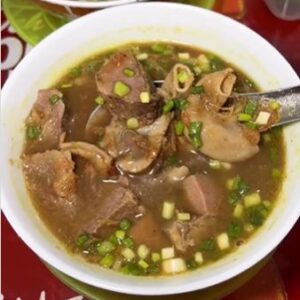
JAYAPURA (Antara) – The free nutritional food program (MBG) has now been implemented in various regions in Indonesia including in Papua Province.
The Papua regional government is determined to succeed the MBG program in several ways, including by conducting trials of free nutritious food in several locations.
To realize this program the Papua Provincial Government together with 9 regencies /cities in this area optimize the use of local food that is more to save on the budget.
Because, regencies/cities in Papua Province so far still bring in agricultural commodities and several other staples from outside the city and outside the region, so that it is enough to cost.
Therefore, the Papua Provincial Government is now intensifying the planting of local food. This method is done to prepare a relatively cheap food needs to support the MBG program.
“Our current obstacle is the price of the MBG program for children in Papua Province. According to the local district government is not enough. Therefore, there needs to be innovation and teamwork, “said Acting Governor of Papua Ramses Limbong.
The cost of eating for school children in Papua ideally ranges from Rp. 25-45 thousand/child, depending on their respective regions.
To get around this, the government is now trying to build coordination with relevant agencies and start planting local plants and what food ingredients can be substituted, but do not reduce the nutritional content.
In Sarmi Regency, for example. This area is famous for marine products, vegetables, tubers and meat. These results must be managed by the local government to be a menu that children like.
Then, in Keerom Regency which is difficult the product of fish can be replaced by protein with meat or eggs. Likewise in other districts that have their own characters.
“With this effort, we are sure that the MBG program will run smoothly. Therefore, all regional governments, TNI-Polri and other relevant agencies must continue to guard so as not to fail. Because this is important for the fulfillment of the nutrition of children in Papua, “said Ramses Limbong.
Based on data from the Central Statistics Agency (BPS) of Papua in 2020, the area of plantations in Papua Province was recorded at 152,555 hectares. Sago is the largest plantation crop reaching 54,657 hectares with a production of 67,913 tons per year.
In addition, in the livestock sector, the poultry population in Papua Province in 2021 reached 7,558,989, with the most poultry was broiler or cutting chicken with a total population of 3,282,917 tails, while the duck population was 192,743.
The results of meat production in Papua Province in 2022, from beef cattle were 2,616,770.82 kilograms, horse meat 17,250.00 kilograms, poultry meat dominated by native chicken was 5,045,489.13 kilograms and duck meat was 124,065.35 kilograms.
While the production of capture fishery products in 2021 was 247,238 tons. The highest capture fishery production is found in Merauke Regency as many as 44,786 tons. While the production of fishery products in Papua Province in 2021 was 22,144 tons from the results of enlargement and 22,934,000 hatchery results.
From this production it is expected to be the basis for the fulfillment of nutrition for school children from kindergarten to high school or equivalent in Papua.
Nutritious local food
Seeing the potential of local foodstuffs it is hoped that menus will be produced with adequate nutritional content so that they can support the MBG program.
In 100 grams of dry sago, there are 94 grams of carbohydrates, 0.2 grams of protein, 0.5 grams of fiber, 10 mg of calcium, and 1.2 mg of iron. The calories produced by 100 grams of sago are 355 calories.
The calorie content of sago starch every 100 grams is not inferior to other calorie content of food.
Comparison of calorie content of various starch sources is (in 100 g) Corn 361 calories, 360 calories ground rice, 195 calorie cassava, 143 calorie sweet potatoes and 353 calories.
“So just how to translate the 100 grams into the children’s food menu,” said Head of the Applied Bachelor Study Program for Nutrition and Dietetic Ministry of Health (Kemenkes) of Jayapura Health Polytechnic (Poltekes) Maxianus K. Raya.
Even so, at this time there are challenges because children’s food begins to change where rice becomes the main food, so it becomes a shared task so that the young generation on Cenderawasih Earth still likes local food.
Food providers for the MBG program are expected to present local menus and liked by children. Thus, the MBG program in nine regencies/cities in Bumi Cenderawasih can take place well.
Presentation of food must be created. This is important so that children like local food for the MBG program.
Teroades for example, which are usually only boiled, can be created by ground and then printed using funny molds, served with shredded fish, and vegetables lodeh or fern. Or can also be served with boiled beans, jackfruit seeds, and some other foods.
There is also sinole or known as a sago roll omelette, can be served with grilled fish and vegetable vegetables.
While local fruits such as avocados, pineapple, oranges, mangoes, dragon fruit, and others that can be obtained in a number of areas in Papua. The fruit can also be a variant for the MBG program.
So many variations of food and fruits are believed to be liked by children to adults.
“So I hope that the main requirement in realizing the MBG program in Papua is the use of local food or the natural potential of the local area,” said Papua Community Empowerment Figure, Orilina EPA
According to the nilIn who is also a Papuan culinary guard, with diverse local food products can be an idea for food providers to continue to be creative. Papuan local food is processed creatively so that it can be more attractive and liked by children and adults.
He hopes that there will be good cooperation between the central government, regional governments and related agencies, as well as Papua culinary business actors and local MSMEs to succeed the MBG program
With the intense coordination of all parties, the children will get healthy, fresh and nutritious food. The wealth of local food in the land of Papua is expected to be processed as a source of balanced nutrition in supporting the successful implementation of the MBG program.
Editor: Slamet Hadi Purnomo
Copyright © between 2025






